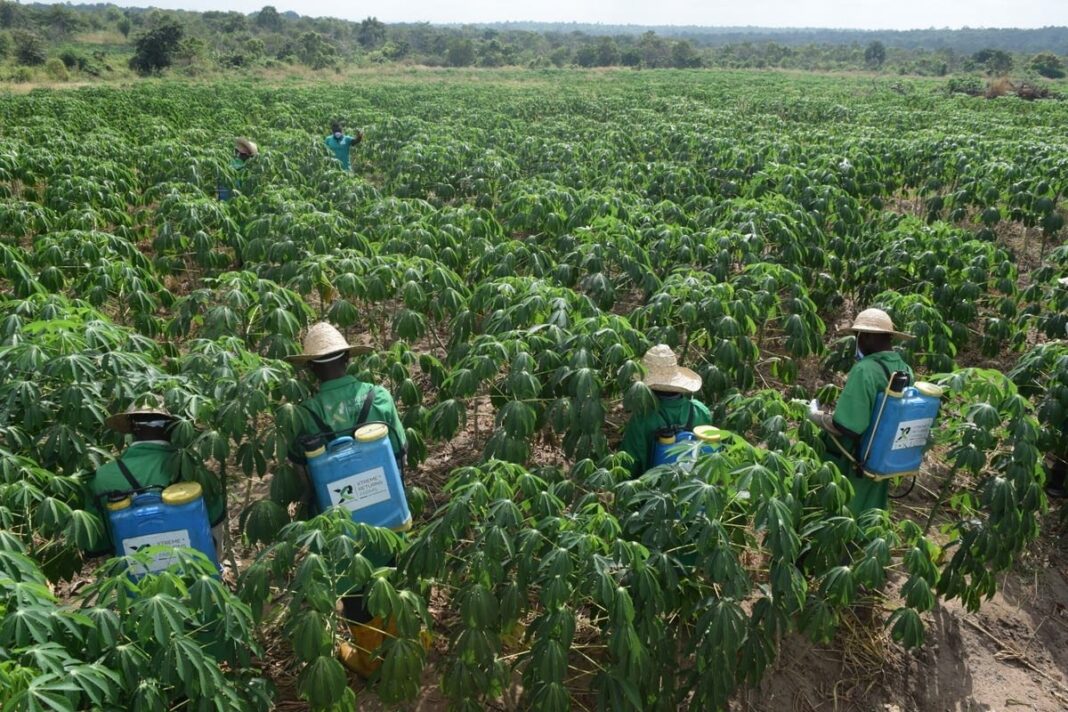Steps required to start a profitable cassava enterprise.
1. Select a suitable land: While Cassava can grow and thrive in most soils, the best kind of soil is one with a good texture. Loamy soil with good drainage comes to mind. Ploughing and harrowing are necessary before planting cassava stems. Although, some farmers prefer to plant on ridges depending on the type of soil. These operations should be done when the soil has enough moisture. The ploughing should be done at least 6 inches deep into the soil.
2. Select the Cassava Variety that suits your needs: Seed Tracker gives details on the numerous varieties of cassava available. But before you choose, you should keep in mind its shelf life, growth speed, starch content, the purpose of cultivation (whether for Industrial starch, stem multiplication, or food) and ability to withstand pests and diseases prevalent in the region.
3. Planting: For agricultural purposes, cassava is propagated exclusively from cuttings. Only physiologically matured fresh healthy stems should be used for planting. A healthy stem is free from insect and diseases, with diameter not less than 1.5cm. The stems should be measure and cut at 25cm length each. You can plant them horizontally which is highly recommended for dry climates. It should be placed 10cm deep in the soil. You can also plant vertically which is advisable for rainy seasons. This will help avoid rot in the floor. Also, the spacing should be 1m x 1m to achieve maximum yield. A cutting or stake should have at least seven viable nodes. Cuttings are planted by hand or by planting machines on flat soil or ridges or hills.
4. Control of Weeds: Herbicides are good for large scale farms. You can apply pre-emergence herbicides before planting and when you spot weeds, try post-emergence herbicides. There are so many post-emergence selective herbicides for cassava in the market, the most common one is Diuron.
Read also: pros and cons of technology in agriculture
 Learn More
Learn More5. Applying Fertilizers: Cassava prefers good soil but also grows in poor soil where other crops fail. It can tolerate low pH as well as a higher level of soluble aluminum and low available phosphorus. The crop removes a considerable amount of nutrient from the soil, depending on the yield level. Hence, continuous production of cassava on a particular land needs fertilizer application.
On soil with depleted nutrient, fertilizers should be applied 8 weeks after planting and should be applied 6cm in width and 10cm from the cassava plant. Also, make sure the fertilizer does not touch the stem or leaves.
6. Harvesting: Maturity differs from one variety to another. For food, the tubers can be harvested at almost any age around 12 months. Cassavas are due for harvesting when the leaves start turning yellow and when they start falling off. This usually happens 8-10 months after planting for early maturing variety. It can be harvested by cutting the stem off, leaving the part close to the ground so you can grab and pull out the roots.
There you have it. If the above practices are followed to the latter, the yield can be up to 25 tons per hectare and up to 60 ton/ha for hybrid varieties. With this, you can tap into a thriving market!
For more information and updates join our WhatsApp group HERE
Like our page on Facebook HERE











